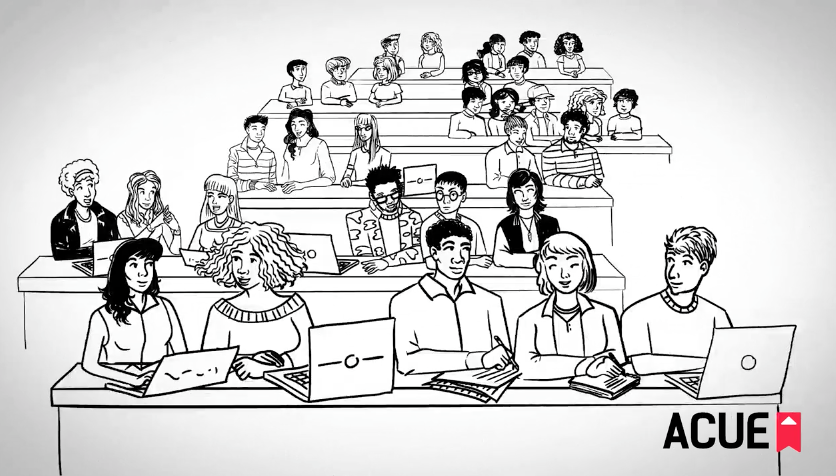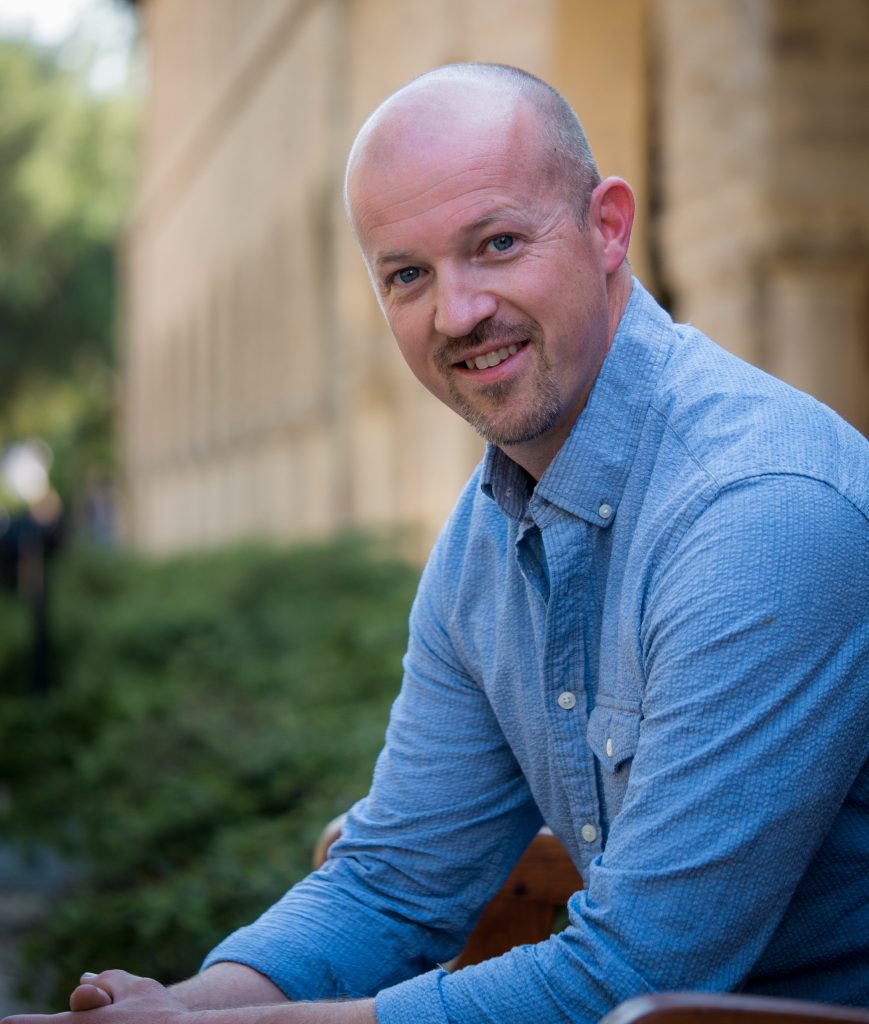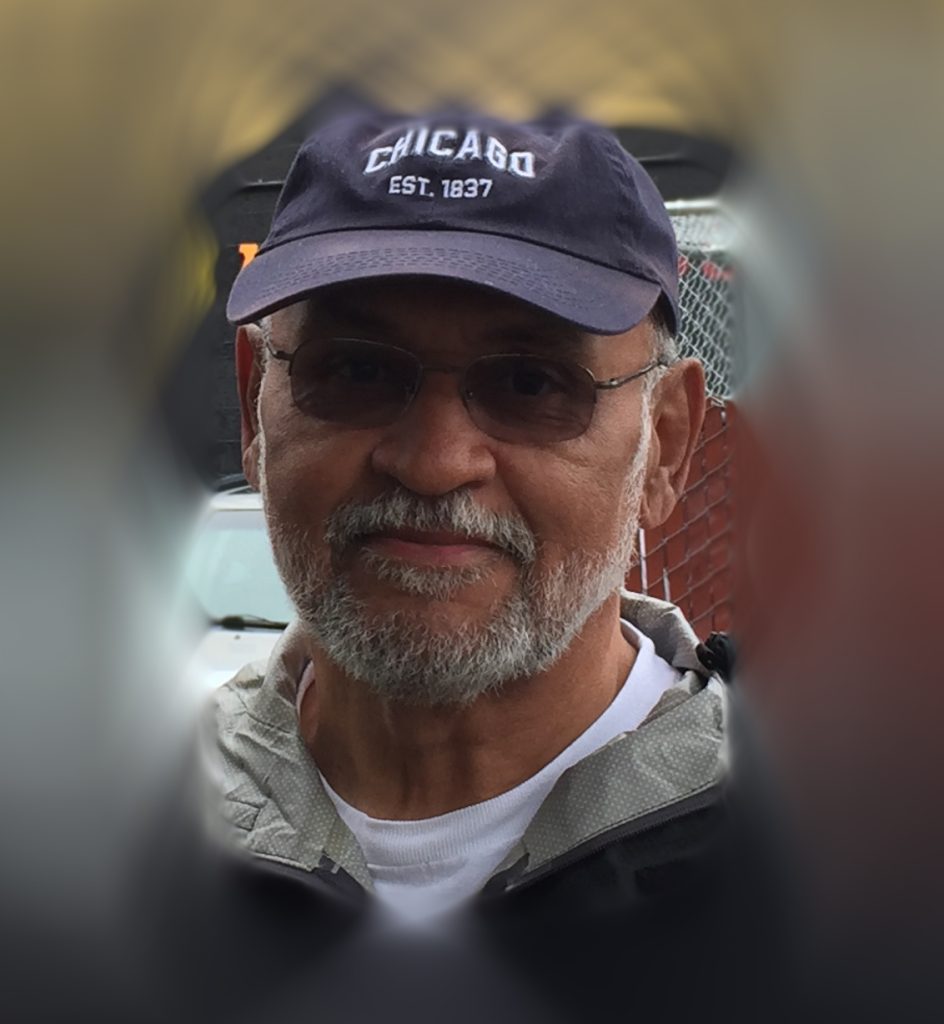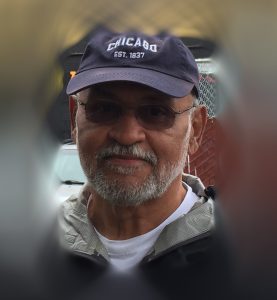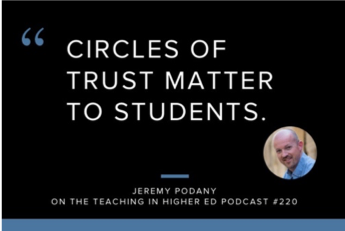By Jeremy Podany
 There is an emerging movement of University Faculty and Career Service Staff working together to educate students about their future working life. It looks different than it has in past iterations. It is more thoughtful, sophisticated, and mission centric. And, it’s very encouraging to the students themselves.
There is an emerging movement of University Faculty and Career Service Staff working together to educate students about their future working life. It looks different than it has in past iterations. It is more thoughtful, sophisticated, and mission centric. And, it’s very encouraging to the students themselves.
The interest in career education being more closely linked to faculty is being stimulated by a big problem and a big desire that have surfaced as of late.
• The BIG PROBLEM is that we, as colleges and universities, are merely making career services available, rather than making a commitment to actually reach and influence the career preparedness of EVERY student. This problem has many dimensions. It can be solved—and now seems to be the opportune time in history—but the solutions are not easy or quick.
• The BIG DESIRE is that students everywhere are now making college decisions related to how well the university prepares them for their future, and they want to lean on faculty and others to help them.
This begs for a new vision for how universities approach career learning on campus. It has prompted a paradigm shift from simply offering career services to actually educating all students about career readiness.

Faculty: The Genesis of Career Learning on Campus
In the early 1900s and prior, university faculty were often found dialoguing with students about their future as productive citizens, about how the life of the mind and meaningful work were intertwined, about those in their network students could connect with for further learning about their future, and about what it took to advance in vocational pursuits over time. Faculty were the ‘go-to,’ and one of the only options for ‘career’ help. This was not only true for career learning but for course scheduling, financial issues, conduct matters, residential housing, and much more. Over time, a few pressing higher education issues detached many faculty from the one-stop shop role, and specifically from this type of mentoring and advocacy about the future of work for their students.
Particularly, the following occurred:
• As access and desire for higher education became more available and sought after by the masses, faculty faced a scale problem in being able to personalize these types of conversations.
• Simultaneously, the role of career advising became a profession, and universities began to drive traffic to toward these new vocational experts.
Faculty never stopped caring, but the system changed.
The System That is NOT Working
This evolution of professionalizing career help has taken many forms, and, as Dr. Farouk Dey and Christine Cruzvergara (2014) referred to it in “Evolution of Career Services in Higher Education,” birthed the eras of placement, then counseling, and then networking. All have been unique, but all centered around driving students to the official career office of the university. This has unfortunately, in many cases, created a binary view of expertise: Students talk to faculty for unique academic expertise, and they talk to career professionals for all career expertise.
Today, this operational paradigm of binary expertise has proven to be inadequate when it comes to educating all students, and has posed some genuine problems. Some of the dimensions we see related to this challenge are:
1. Scale: Universities can’t reach ALL students with high-quality preparation for their future through the career office alone, especially when the ratio of career advisors to students is something like 1 to 1000 or 1 to 2500. The ‘come see us in the career office’ model as a primary approach can only serve a small percentage of the total population.
2. Trust: If you do the math, most teaching faculty spend upwards of 200 times the amount of time with students than do career advisors and, because of this, may often have higher levels of trust with students than career advisors. Students today want insight from people they trust, and they tend to feel comfortable asking faculty questions about their future.
3. Care: Faculty care about the future of their students and are more frequently asking for strategies, resource knowledge, assignments, classroom activities, and experiential activities that make it easier to respond to students’ needs and demonstrate they care about students’ futures.
4. Desire: Students like to get insight and expertise from various parties and resources—alumni, parents, faculty, friends, career staff, short videos, experiences on trips, and experiences in their field. They gravitate toward the people and places they trust the most.
5. Time: Faculty, career staff, and non-career staff alone are strapped for time. They likely don’t want additional job duties, but they still want to be able to easily answer student inquiries.
So, what do we do with this multidimensional challenge?
The Emerging Educational Practices
My team at The Career Leadership Collective has the joy of interacting with hundreds of career services leaders each year. We host an annual series of Think Tanks on a topic that is very important to them, yet without best practices. This year, our topic was Career in the Classroom, and we invited faculty, department chairs, and academic deans to join career leaders in the conversation. It was quite robust, to say the least, and many solutions came out of the effort. Through conversations, surveys, and activities, we sought to understand a number of research questions. I will highlight two of these questions below:
1. What type of career learning information are faculty most interested in being abreast of on a regular basis? The first big takeaway related to this question is that faculty would very much like to have easy access to quality career-related information. In particular, we learned from career leaders and faculty alike that information on the following will show up in their student conversations, their reflective activities, their field experiences, and class discussions, if they have it:
2. Department-specific data on where their graduates go to work, the types of jobs they have pursued, and salary information; specific alumni spotlights; and geographic, industry, and pathway diversity. Universities today must have this data, and faculty should request it from their career centers or upper administrators.
a. The elements of a great career conversation. If students want to know how to explore possible careers or conduct a job search, what should faculty say? We have helped quite a number of universities empower faculty with this information—and it goes a long way.
b. The most sought-after skills of the future. I recommend the World Economic Forum’s The Future of Jobs
c. If their department is closely related to an industry, the leading-edge trends in employment in that industry. Again, The Future of Jobs report is a great resource, and there are many more.
3. What educational practices are ideal for career education to most effectively happen inside the classroom? The discussions around this question during our Think Tank were rich with insight and quite extraordinary in detail about how some campuses were choosing to lean in. Here is what we discovered is helping the most:
a. Create faculty champions. Many campuses have found it quite effective to have a group of faculty career champions that gather regularly, and then take information and insights back to their departments. This allows for implementation to be led by faculty, not career staff, and leaves room for translation into unique departmental cultures. We have seen this in liberal arts contexts, at big state schools, and across disciplines. Examples include the following:
• The Walter Center for Career Achievement in The College of Arts & Sciences at Indiana University has a network of nearly 60 faculty and non-career staff involved in their efforts.
• George Mason University certifies faculty and non-career staff, and they become known as part of the Mason Career Influencers Network. They have nearly 200 participants involved.
b. Hold syllabus enrichment meetings. Some campuses have found success by getting faculty from cross-disciplinary departments together prior to the start of the year to do a syllabus enrichment meeting to strengthen objectives and outcome statements related to real-world relevance, sought after skills, and career readiness or reflection. A key example where this is taking place is through the Faculty Champions program at The University of Utah, which is a robust initiative that involves annual faculty awards for unique career education contributions.
c. Encourage faculty to integrate supplemental career assignments into their courses. One trend we hope catches on even more is supplementary online career education for students. Institutions like the University of Wyoming and Mercy College have adopted systems that provide students with short video or interactive training modules about topics such as attending a career fair, preparing for an interview, or building a résumé. Some systems have built-in accountability, where faculty who use these as supplemental assignments can see an administrator view of who has completed the modules. These modules offer helpful pre-made assignments that are simple, short, and effective for faculty to add to their syllabus. They also help to answer a lot of minor career questions that students often ask faculty.
d. Develop collaborative projects between the curricular and co-curricular. In certain cases, we have seen the creation of high-quality resources by focused committees of academics and career staff. One such example is the Carleton College Pathways Project, which is a brilliant repository of information dedicated to certain career pathways. Developing this type of solution takes time and can come in various forms but pays big dividends for students, faculty, and career staff.
The Future Is Bright
As we look to the future, here is what we think career leaders and faculty can expect to see more of:
• Online repositories of career reflection assignments and activities. This will be a big win for universities that are willing to take the time to pull it off. Imagine a 24/7 accessible online library of career reflection assignments and class activities that will make faculty’s lives easier. These resources should be ready to go, easy to use, and moldable to different academic disciplines. There are a few universities pursuing this approach, and we hope to see it become more widespread.
• Virtual alumni panels. We have learned that it is quite helpful for alumni, especially those professors know well, to engage with students about how they are applying certain concepts they learned in relevant courses. This happens too infrequently. We know of start-ups that are in the very early stages of bringing products to market to help scale this virtually. Of course, Zoom, Hangouts, and other technology make this doable now.
• Virtual reality job treks. In-person treks (group trips to visit employers) are quite popular right now, often with student waiting lists. They are educationally invigorating for students, as they allow students to see firsthand what it will be like to work for certain organizations. They take resources and time to plan, and often only impact a few students. We know of early stage start-ups that are pursuing virtual reality solutions for students to explore. If done well, we can see this being a very beneficial tool for faculty to adopt en masse.
I am so delighted for the partnerships that are emerging everywhere. My sincere admiration goes to the many faculty and career staff around the country who are thoughtfully implementing new educational practices for the sake of empowering students in their future pursuits!
Jeremy Podany is the CEO and Founder of The Career Leadership Collective, one of the fastest growing solutions groups in higher ed and career services. In 2017, their first year, The Collective did business with over 300 universities and saw over 20,000 people from 30 countries engage their online blog and video content. Jeremy is an innovation, leadership, and organization growth connoisseur who enjoyed a 17-year career in higher education, leading career services offices, and has helped build six unique start-ups inside and outside of higher education. Jeremy regularly writes, speaks, trains, invents, and consults for universities, businesses, and tech start-ups. He has a BA in English Education from Western Michigan University and a master’s degree in Higher Education Administration from Indiana University. Jeremy lives in Fort Collins, Colorado, with his wife and four children and loves hiking in, and gazing at, the Rocky Mountains.
 Q: What are your college’s goals for participating in the Consortium?
Q: What are your college’s goals for participating in the Consortium?

